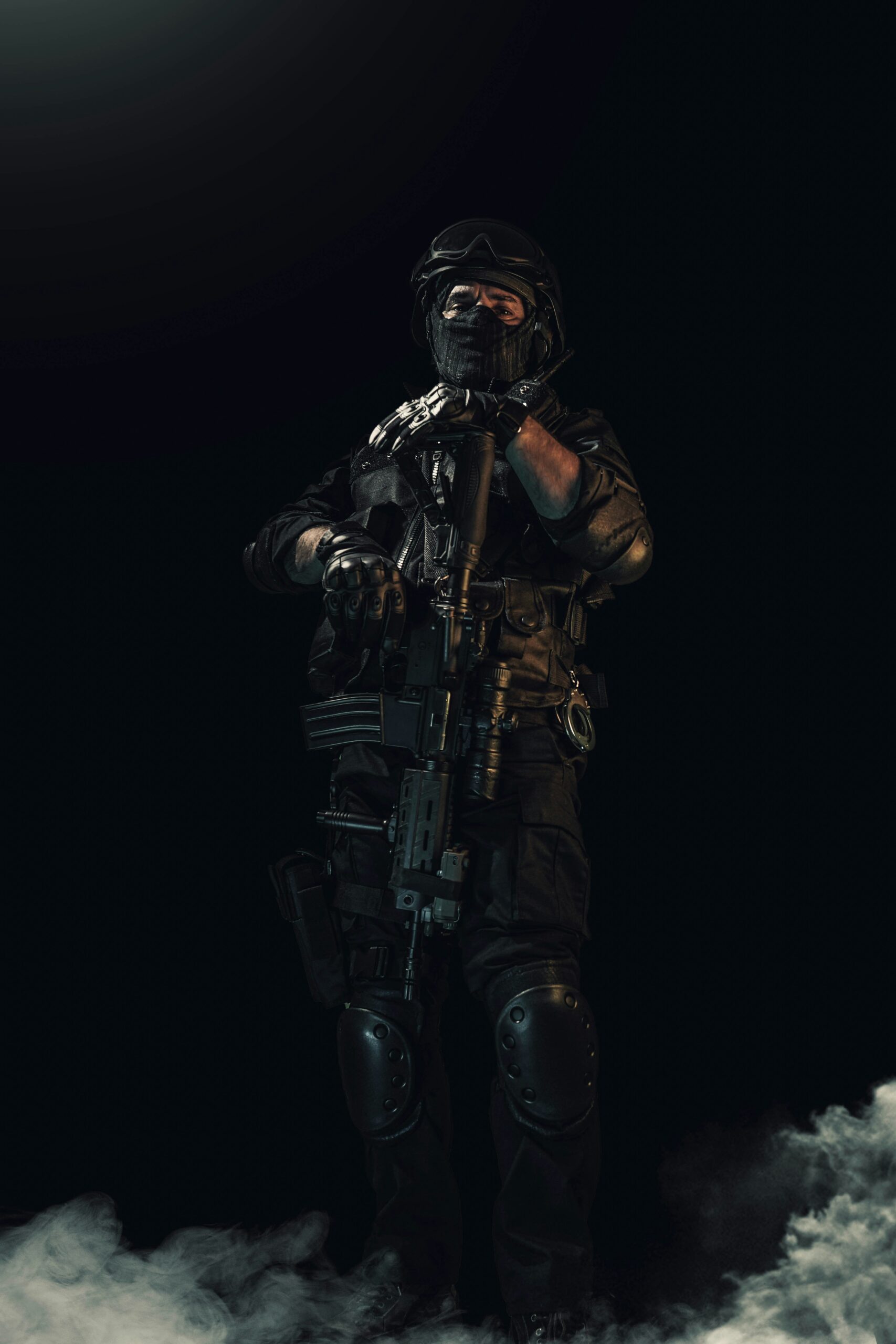Have you ever wondered what military optics are and why they play such a crucial role in modern warfare? The term might sound technical, but it encompasses some fascinating technology that significantly enhances a soldier’s capabilities on the battlefield. Let’s unpack this topic together and see what makes military optics such a vital asset to armed forces.
Understanding Military Optics
Military optics refers to various devices that utilize lenses, mirrors, and other optical systems to improve vision and targeting capabilities in combat settings. These devices include scopes, binoculars, night vision, and thermal imaging equipment. They are designed to provide soldiers with a clear and accurate view of their environment, improve engagement precision, and offer crucial information about the battlefield that can mean the difference between mission success and failure.
Components of Military Optics
Military optics are composed of several key components that work together to enhance visibility and targeting. These components include:
- Lenses: Essential for focusing and magnifying images.
- Mirrors: Help in redirecting light and providing multiple angle views.
- Reticles: Crosshairs or other markers placed in the scope to aid in aiming.
- Turrets: Used to adjust the optics for accuracy (e.g., windage and elevation).
Types of Military Optics
Various types of military optics are used, each serving distinct purposes. Some common types include:
- Rifle Scopes: Designed to attach to weapons, providing magnification and reticle for precision targeting.
- Binoculars: Handheld devices for magnifying distant objects, offering a broad field of view.
- Night Vision Devices: Enhance visibility in low-light or complete darkness by amplifying available light.
- Thermal Imaging Devices: Detect heat signatures to identify living beings and mechanical equipment in various conditions.
How Military Optics Work
Understanding how these optical devices function can demystify their complexity. Essentially, military optics can be broken down into processes that involve light gathering, amplification, and image processing.
Light Gathering
The initial step in any optical device is collecting light. This is typically accomplished through lenses and mirrors that focus the light onto sensors or the user’s eye. Lenses can be simple, like in conventional binoculars, or highly specialized, like those in thermal imagers.
Image Amplification
Image amplification is crucial, particularly for night vision equipment. Night vision devices collect whatever ambient light is available—whether it’s moonlight, starlight, or even infrared light—and amplify it so that the user can see in low-light conditions.
Image Processing
Modern military optics often incorporate digital image processing to enhance clarity, contrast, and resolution. This technology can filter out noise, stabilize the image, and even add data overlays, such as range estimates and movement detection.

Advantages of Military Optics in Combat
Military optics offer several advantages that are indispensable in combat scenarios. These benefits include enhanced situational awareness, greater engagement accuracy, and increased operational effectiveness.
Enhanced Situational Awareness
With military optics, soldiers can identify threats and opportunities from a distance, often long before they could be seen with the naked eye. This allows for better decision-making and strategic planning.
Greater Engagement Accuracy
Precise optics result in improved aiming accuracy. Whether it’s hitting a target at long range with a sniper rifle or identifying adversaries in low light with night vision, such accuracy is paramount for mission success and reducing collateral damage.
Increased Operational Effectiveness
Overall, the use of advanced optics contributes to more effective operations. From scouting and reconnaissance to tactical engagements, the ability to see clearly and precisely always creates a significant advantage.
Common Applications of Military Optics
Military optics are utilized in various applications, enhancing different facets of military operations. These applications range from reconnaissance and surveillance to sniping and night missions.
Reconnaissance and Surveillance
Military optics are invaluable in reconnaissance and surveillance operations. High-powered binoculars and spotting scopes allow military personnel to monitor enemy movements and gather intelligence without being detected.
Sniper Operations
Sniper rifles rely heavily on advanced optics. Scopes with high magnification and precise reticles enable snipers to engage targets accurately over vast distances. Adjustments for windage and elevation are crucial components made possible through complex scope systems.
Night Operations
Night vision equipment, such as goggles and scopes, makes it possible for soldiers to operate effectively in low-light and no-light conditions. This capability provides a significant tactical advantage, allowing for surprise tactics and night-time operations that wouldn’t be feasible otherwise.

Key Innovations in Military Optics
Over the past decades, military optics have undergone significant advancements. Innovations continue to push the boundaries of what’s possible, making these devices more sophisticated and effective.
Electro-Optical Systems
Electro-optical systems integrate electronic and optical components to vastly improve performance. These systems include features like digital zoom, image stabilization, and even the ability to stream data in real-time to command centers.
Laser Rangefinders
Modern optics often include built-in laser rangefinders. These devices emit a laser beam toward a target; the time it takes for the beam to return is used to calculate the target’s distance with high precision.
Augmented Reality Overlays
Some of the latest military optics feature augmented reality (AR) overlays that display crucial information directly in the user’s line of sight. This information can include maps, enemy positions, and other tactical data, enabling better decision-making in real time.
Challenges and Limitations
Despite their numerous advantages, military optics are not without challenges and limitations. Understanding these can offer a more balanced view of their effectiveness.
Environmental Factors
Optical devices can be affected by various environmental conditions. Fog, rain, and dust can obscure lenses and reduce visibility. Thermal imaging can also be less effective in extreme temperatures where heat signatures may not contrast sharply.
Maintenance and Durability
Another challenge is the maintenance and durability of military optics. These devices often require meticulous upkeeping to ensure they function correctly. In harsh combat conditions, keeping optics clean and operational can be challenging and labor-intensive.
Cost
Advanced military optics systems are expensive to produce and maintain. High costs can limit their availability and necessitate prudent allocation to high-priority units or missions.

Training and Usage
Effective use of military optics requires proper training. Soldiers need to be well-versed in the functionality, maintenance, and tactical application of these devices to make full use of their capabilities.
Basic Training
Basic training usually includes the fundamental principles of optics, understanding the various components, and learning how to operate the equipment under different conditions.
Advanced Tactical Use
Advanced training focuses on tactical applications, such as calculating range, adjusting for windage, and using night vision in coordination with other equipment. Soldiers practice in simulated combat scenarios to build proficiency.
Regular Drills and Maintenance
Regular drills help soldiers stay familiar with their optics, ensuring they’re always ready for use. Maintenance courses teach them how to clean and service their equipment, extending its lifespan and reliability.
Emergency Situations: When Optics Fail
It’s crucial to be prepared for scenarios where military optics may fail or become otherwise unusable. Soldiers are trained to adapt and overcome these situations through various backup methods.
Manual Sighting Techniques
These techniques involve basic skills for aiming and distance gauging without the use of advanced optics. Mastery of these skills ensures soldiers remain combat-ready even when technology falters.
Redundancy Systems
In some cases, multiple optical systems may be used to provide redundancy. For instance, thermal imaging may serve as a backup for night vision, ensuring that soldiers have multiple options for maintaining visibility in adverse conditions.
Ethical Considerations
The use of military optics also brings with it ethical considerations. The precision and power of these devices raise questions about accountability and the responsible use of force.
Precision vs. Collateral Damage
While military optics can greatly reduce collateral damage by enhancing target precision, they also increase the capability to inflict substantial harm. This duality warrants cautious and ethical usage to avoid unnecessary loss of life.
Surveillance and Privacy
Advanced optical devices capable of long-range and low-light surveillance may raise privacy concerns. The use of such technologies should be carefully balanced against respect for individual rights and freedoms.
Technological Trends
Staying abreast of technological trends is essential to understand the future direction of military optics. Innovations continue to evolve, promising even more effective and versatile tools for armed forces.
Artificial Intelligence Integration
Artificial intelligence (AI) is increasingly being integrated into military optics. AI can enhance target recognition, automate adjustments for environmental factors, and provide real-time decision support, making the systems smarter and faster.
Lightweight and Compact Designs
There’s a constant push towards making military optics lighter and more compact. Advances in materials science and miniaturization allow for the development of equipment that’s easier to carry and use without sacrificing performance.
Interconnectivity and Network Integration
Future military optics may emphasize greater interconnectivity and network integration. This allows for real-time data sharing across units and command centers, creating a cohesive and informed operational picture.
Choosing the Right Optics
Selecting the appropriate military optics depends on several factors, including the specific mission requirements, environmental conditions, and individual preferences.
Factors to Consider
- Magnification: Higher magnification is useful for long-range targeting but can be cumbersome for close-quarters combat.
- Field of View: A wider field of view is beneficial for situational awareness but might sacrifice some level of detail.
- Weight: Heavier optics may offer more features, but they can also slow you down. Balance is key.
- Battery Life: Optical devices running on batteries need consistent power. Longer battery life ensures you can rely on your equipment when you need it most.
Recommendations
- Snipers: High-magnification scopes with excellent light-gathering capabilities.
- Infantry: Medium-range scopes with good balance between magnification and field of view.
- Reconnaissance Units: Lightweight binoculars and spotting scopes with long-range capabilities.
Conclusion
Military optics have revolutionized modern warfare, providing crucial advantages in terms of visibility, targeting precision, and overall situational awareness. From rifle scopes and binoculars to night vision and thermal imaging devices, these tools are indispensable for today’s armed forces. With ongoing innovations and technological advancements, military optics will continue to evolve, offering even greater capabilities and transforming how military operations are conducted.
Understanding and appreciating the complexity and utility of these devices can give you a deeper respect for the technology that underpins modern combat effectiveness. While they bring impressive capabilities, military optics also come with their own set of challenges and ethical considerations, underscoring the importance of informed and responsible use. As technology advances, staying updated on these developments is crucial for leveraging the full potential of military optics on the battlefield.
